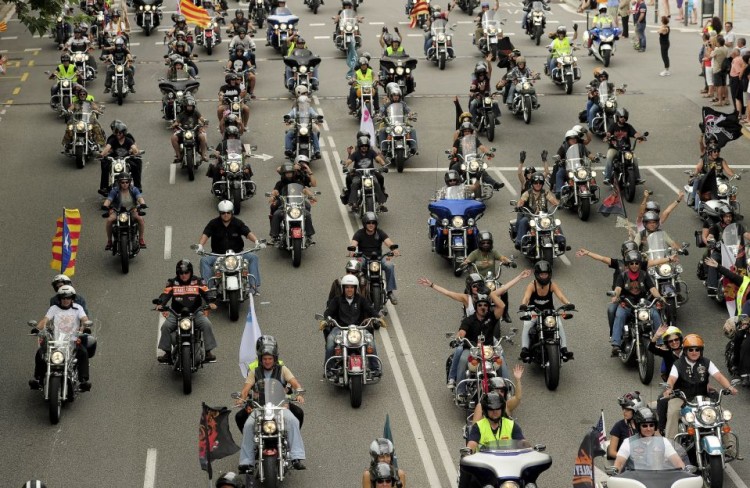The Industrial Revolution was launched in Britain in the early 1800s with the automation of the textile industry, with Germany and the United States following suit.
“Industrialization in America involved three important developments. First, transportation was expanded. Second, electricity was effectively harnessed. Third, improvements were made to industrial processes such as improving the refining process and accelerating production,” according to an article on the About.com website.
As American labor became too expensive for America’s textile, electronics, and automotive industries, American-based companies started outsourcing manufacturing jobs to Latin American and Asian countries beginning in the 1970s. According to a recent estimate by Outsaurus, 10.5 million jobs have been outsourced.
A long list of companies that are outsourcing American jobs is provided on the Outsaurus website. Well-known companies on that list include: American Express Co., Anheuser-Busch LLC, Apple Inc., Bank of America Corp., Bank of New York Mellon Corp., Caterpillar Inc., Computer Sciences Corp., International Business Machines Corp. (IBM), Home Depot Inc., and Honeywell International Inc.
“Our mission is to expose American corporations and the damage Outsourcing American Jobs has caused our Nation,” according to the Outsaurus website.
Harley-Davidson Considered an American Icon
Harley-Davidson Inc. “actually builds its motorcycles here in the United States. …. Many manufacturing executives point to the need to stay competitive when they move work overseas. But Harley-Davidson doesn’t seem to be suffering too much by making its products at home. Shares of the company are up 17 percent over the last year and the company holds about half the market share in the U.S,” according to a July article on the 24/7 Wallstreet website.
Harley-Davidson Motorcycles, owned by Harley-Davidson Inc., has sold American-made products since 1908. A popular motorcycle among the poorer and wealthier segments of American society, Harley-Davidson motorcycles are produced in Kansas City, Mo., Tomahawk, Wis., Wauwatosa, Wis. (until 2010), Menomonee Falls, Wis. (after 2010), and York, Pa. The manufacturing plants in Brazil and India are solely for assembly of parts shipped from the United States.
“The secret to Harley’s brand valuation is probably its longevity. … The brand is widely known in the U.S. and, to some extent, abroad. ... Harley is the victim of a narrow set of products with a modest market beneath the umbrella of a brand that is well-known,” according to a June 24/7 Wall St. article.
“Harley is proof that brand valuations do not always translate into a successful business with impressive prospects,” the article states. Despite this claim by 24/7 Wall St., Harley-Davidson’s financial wherewithal is satisfactory and has kept the company going even during the worst financial disaster of the past years.
For the second quarter of 2012, Harley-Davidson reported consolidated revenue of $1.73 billion, compared to $1.51 billion for the same period in 2011.
From the beginning of 2012 to the end of July, Harley-Davidson’s income from continuing operations increased by 35.3 percent. During the same period, the company sold 145,391 new motorcycles worldwide, increasing sales by 9.3 percent.
At fiscal-year-end (FYE) 2011, total consolidated sales revenue amounted to $5.3 billion versus $4.9 billion for FYE 2010 and $4.8 billion for FYE 2009. In FYE 2011, the company reported $599 million of net income versus $146.5 million in FYE 2010. Total consolidated net worth amounted to $2.2 billion at FYE 2010 and $2.4 billion at FYE 2011.
“Somehow Harley-Davidson (NYSE:HOG) made it onto the Interbrand list of Best Global Brands 2011. With a valuation of $3.5 billion, it sits near smartphone giant HTC and very close to Starbucks (NASDAQ:SBUX). Its presence is proof of how often fame cannot be turned into revenue, at least to any impressive extent,” according to the June 24/7 Wall St. article.
SWOT Analysis of Harley-Davidson
According to financial analyst reviews, Harley-Davidson’s strengths, weaknesses, opportunities, and threats (SWOT) can be explained in a few sentences. The company has a strong brand image and thus has established itself as the leader in its industry.
However, its weakness is its dependence on the U.S. market. An opportunity for future growth could be a thrust into development of foreign markets, including the Asian markets. However, if its competition is more forceful in developing global markets, Harley-Davidson may have difficulties competing in these markets.
“Shares of Harley-Davidson (HOG) fall 10.4% despite the company beating the estimate of analysts with its Q2 report. Weak dealer sales and the company’s outlook for the rest of the year has traders edgy,” according to an Aug. 1 short note on the Seeking Alpha website.
On Aug. 17, Harley’s share price was $42.28 at closing. The company’s share price has been ebbing and flowing during most past months, reaching a high closing price of $47.09 on July 10 and a low closing price of $42.07 on July 25. In June, historical prices indicated a high closing price of $50.39 on June 19 and a low closing price of $44.69 on June 28.
Harley-Davidson has a lot of institutional support, with the 10 largest institutional shareholders listed in an Aug. 10 article on Wall St. Cheat Sheet, an investor insights website. Among the institutional investors are Bank of New York Mellon Corp., JPMorgan Chase & Co., Lloyds Banking Group PLC, Mitsubishi UFJ Trust & Banking Corp., and American Century Companies Inc.
“Knowing which stocks have institutional support will help improve your investing skills, and teach you how to ride the waves of strong moves,” according to the Wall St. Cheat Sheet article.
A Financial Times analytical review advised that as of Aug. 17, Harley-Davidson’s stock will outperform the market based on an evaluation by a number of analysts, suggesting that the company is doing better than its competition.
“On Aug 01, 2012, Harley-Davidson, Inc. reported 2nd quarter 2012 earnings of 1.07 per share. This result was in line with the consensus of the 13 analysts following the company and exceeded last year’s 2nd quarter results by 32.10%,” according to the Financial Times Harley-Davidson analysis.
American Labor Not Forsaken
“While some companies are considering returning jobs to the U.S., some brands never went away,” according to the July 24/7 Wall Street article, which discusses 10 products that are still produced in the United States.
Pyrex, made by Corning Inc. since 1915, until World Kitchen LLC bought the company in 1998, is still produced in the United States.
Post-it Notes, used by almost everyone employed in the United States, has been produced in Cynthiana, Ky., since 1985. Duraflame Fire Logs, a product of Duraflame Inc., employs 250 Americans in its Stockton, Calif., and Kentucky facilities.
“Because costs of labor and energy are now on the rise overseas, manufacturing may be in the early stages of a rebound in the U.S. An April study by the Boston Consulting Group found that a third of manufacturers with revenue over $1 billion were considering moving jobs back to the United States,” according to the July 24/7 Wall St. article.
The Epoch Times publishes in 35 countries and in 19 languages. Subscribe to our e-newsletter.






